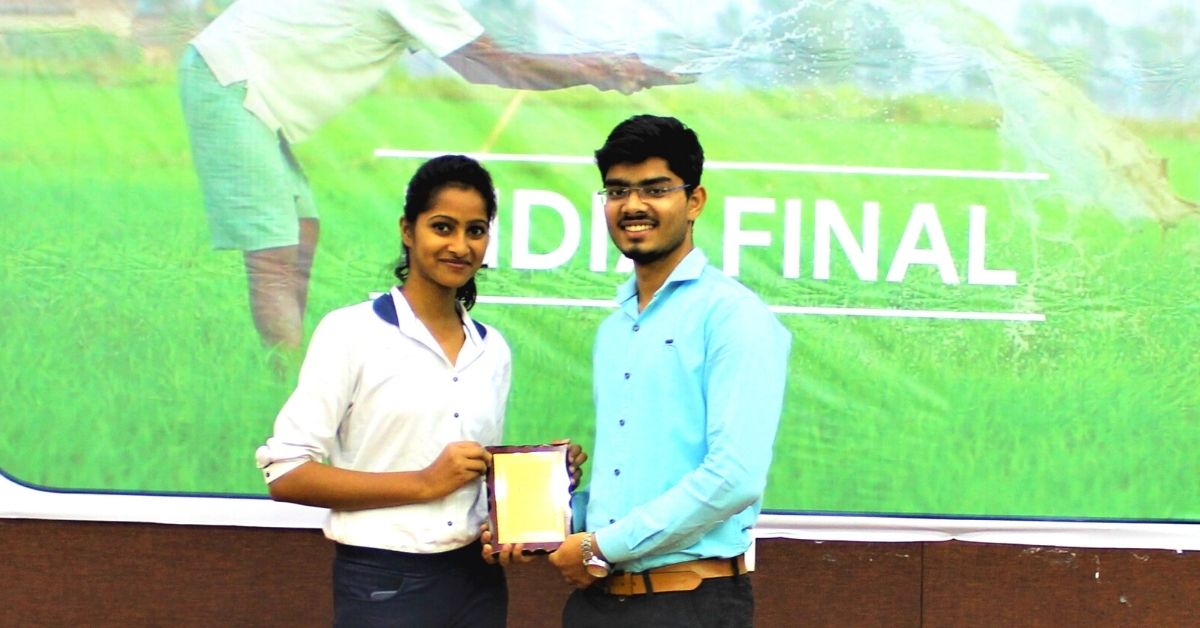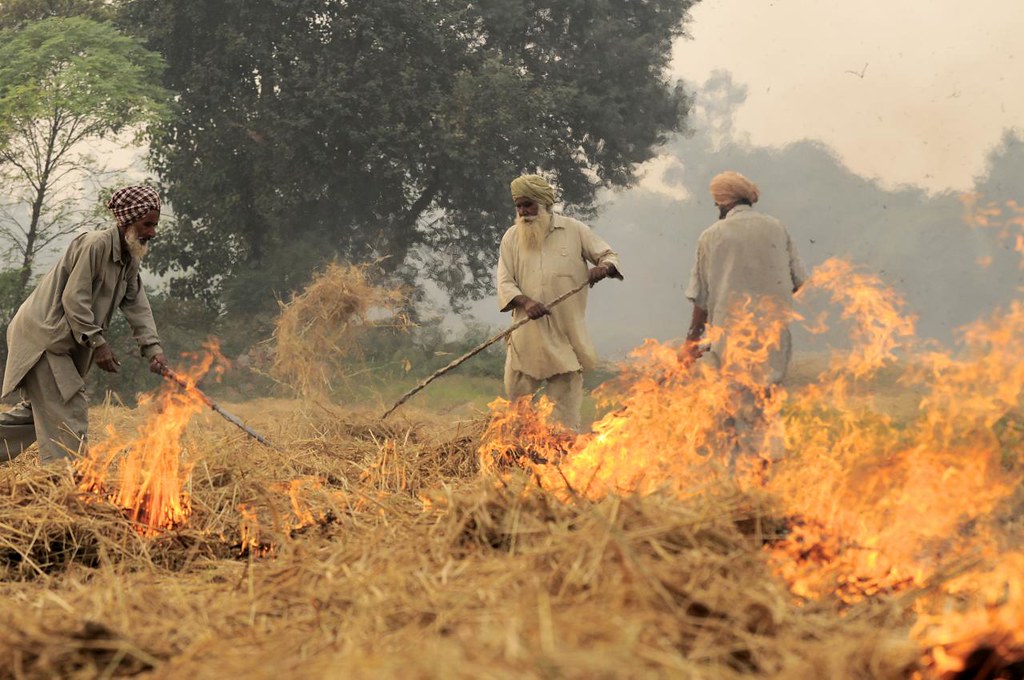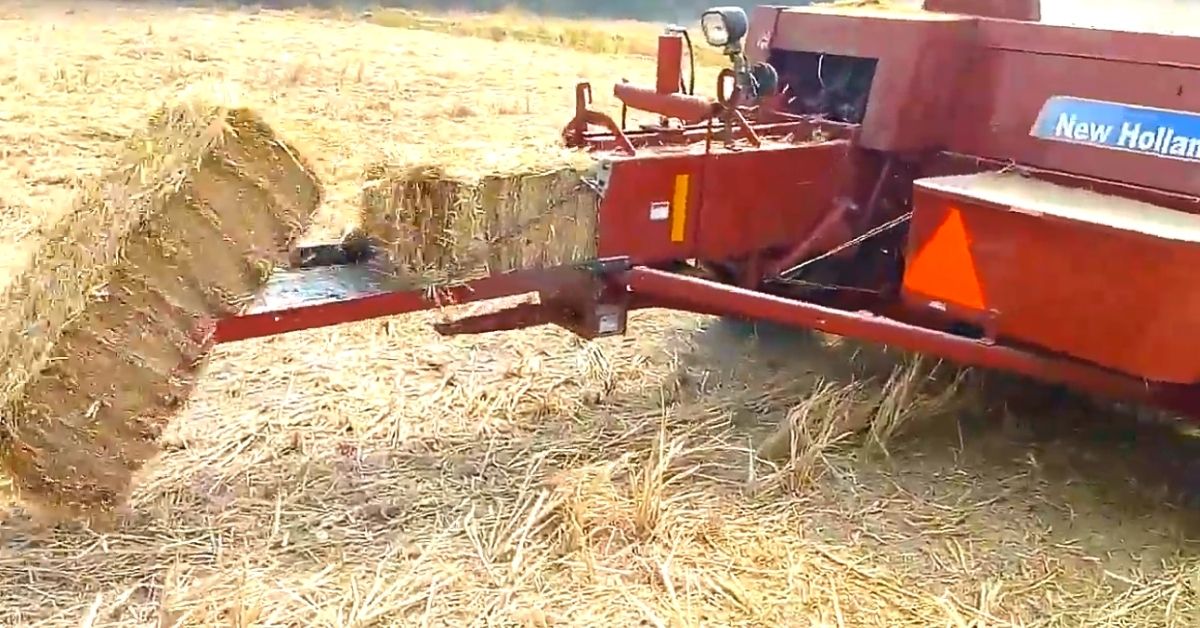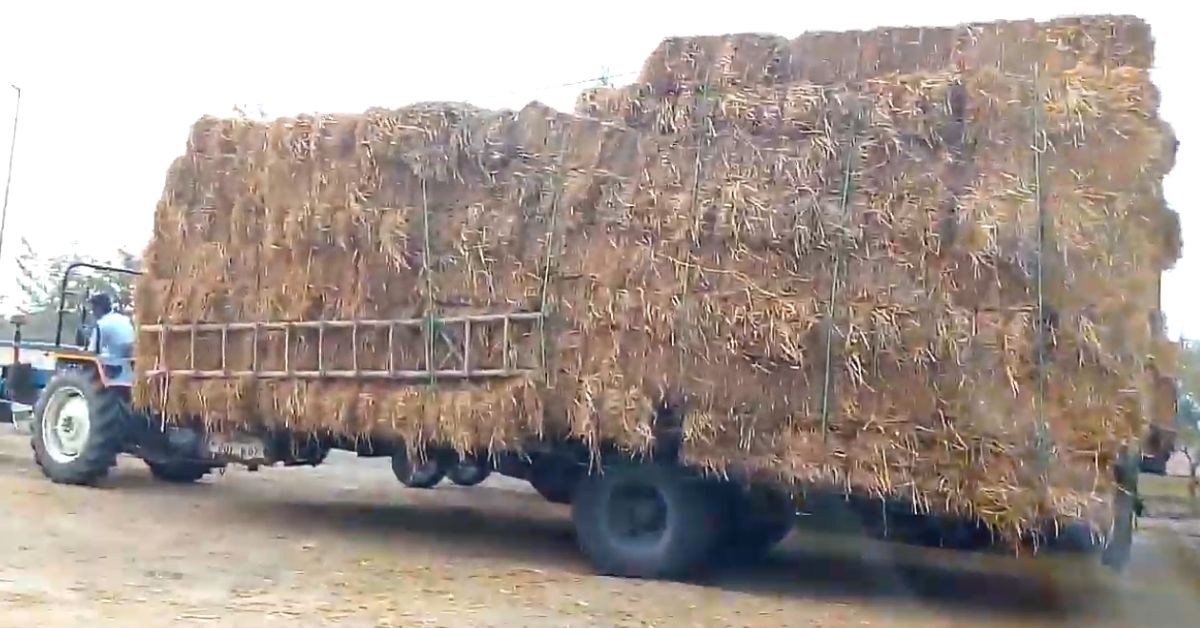Delhi Duo Prevents Stubble Burning, Turns 1200 Ton Waste to Biomass for Free
The illegal practice of stubble burning was banned by the Supreme Court as 50 per cent of Delhi's virtual gas chamber was attributed to stubble burning in 2019. Here's an effective and long-term solution

Acres and acres of lands are being sown with seeds that will result in peppy yellow flowers of mustard, green peas, brown-coloured grams, wheat and barley in the coming few months. While the Rabi (winter) season has started across India, it is states like Punjab, Haryana and Uttar Pradesh that will soon be in news for its notorious but necessary practice of burning the stubble left over from the harvesting cycle of Kharif.
The smokey stench it creates causes massive air pollution across the northern regions of India. We are still in September and Delhi is already recording particulate matter of 2.5 micrometres (PM2.5) in the air.
The practice of clearing farmlands by burning to pave way for new crops is called stubble burning. It was banned by the Supreme Court in 2019, as 50 per cent of Delhi’s “virtual gas chamber” conditions were attributed to stubble burning.

However, with no cheap alternatives to get rid of their straw, farmers have continued to flout the norms, thus continuing the annual ritual of engulfing the region with fumes.
Two Friends With an Idea
Sitting hundreds of miles away in Delhi, two friends, Aayushi Agarwal and Aru Mangla are at the receiving end of stubble burning year after year just like other residents in the National Capital Region (NCR).
Having experienced the hazardous effects of inhaling the toxic air first hand, the duo came up with a low-cost and feasible solution through their startup RY Energies.
The startup, certified by the Department for Promotion of Industry and Internal Trade (DPIIT), converts farm leftovers like paddy straw or sugarcane residue (i.e, stubble) into high-quality biomass resources that are used as a fuel or raw material by power plants to generate electricity. It can take the shape of a pellet needed in biogas or biofuel and the biomass is also in demand by mushroom growers.
“We have grown up breathing the toxic gases suffering from respiratory ailments during the stubble burning period. Both of us were in college when we learnt that the issue can be solved by reusing the agricultural waste. That’s how our journey began. In 2017, we formally incorporated the company as ReneYou Greentech Pvt Ltd after a pilot project and started our commercial operations in 2019,” Aayushi tells The Better India.
Getting to Work
Taking into account all these problems, the duo took mentorship from The Energy and Research Institute (TERI) and IIT-Delhi under StartupIndia Academia Alliance (2018) and Women Entrepreneurship and Empowerment (2017) programme respectively.
In 2018, they collaborated with a Farmer Produce Organisation (FPO) in Sonepat and offered to carry out the conversion process using their machine. This way, they saved on investments and even gained practical knowledge.
Both stints gave them the confidence to finally launch their company and in last one year, they have helped around 115 farmers in Haryana, Punjab, Delhi and Uttar Pradesh get responsibly rid of the stubble.
“It is a barter system where we give our service of clearing their fields for free and in return for the residue. We process it in machines and then sell it to power plants or retailers. We have processed around 1200 tonnes of residue that has generated 1,085 MWh (megawatt per hour) renewable energy units and reduced 14,350 kilos of PM 2.5,” says Aayushi.
A Win-Win Model

Although the process of converting the stubble into biomass material is not new, what makes the startup stand out is its model, where all the stakeholders benefit.
During research Aayushi and Aru had found multiple reasons behind why this conversion method is not widespread, money being the most important factor.
After interacting with several farmers they realised the machines cost up to Rs 15 Lakh and no farmer is in a position to shed that kind of money. Even if the farmer does not use a machine and opts for another comparatively cheaper alternative, still it’s a non-viable deal. The cheapest, quickest and easiest way is burning.
Another issue that even the startup faced is fear. As soon as the new harvesting cycle sets in, the farmers are unwilling to wait even a week before burning the waste, “Many believe the stubble will slow the growth. Earlier farmers would use the straw as a fodder for animals but with excessive use of chemicals, the volume of residue has increased significantly over the years,” says Aayushi.
Selling to a Market
What most farmers don’t realise is their waste can be someone’s asset as biomass already has an established market of buyers.
To bridge this gap and ensure their model is a low cost, the startup approached Village Level Entrepreneurs (VLE) who were willing to invest in a machine. In return, the VLE would get a share of profits from selling the biomass and their costs would be recovered within 2-5 years.
At the district or village level, the company has collaborated with various VLEs and transports the 3-machine set to a farmer’s field. An acre of land generates anywhere between 1.5 to 3 tonnes of stubble and the machine can convert 10-15 tonnes of straw in one day.

“The set comprises – cutter, raker and baler. After cutting the straw, a raker is used to align the straw in rows. Then, a baler machine is used to compress the waste into compact square bales that are feasible to handle, transport, and store. Our machine can process 20-30 tonnes of straw in one day,” says Amarjeet Randhawa, a VLE from Jatiwal village from Patiala district.
The machine owned by him had processed 700-800 tonnes of sugarcane stubble last year.
Each square-shaped piece weighs up to 25 kg, and the approximate dimensions are 30x18x14 inches as per Aayushi.
The pieces are then sold to the retailers and power plants and the revenue generated is shared between the VLE and the company. In 2019, the startup generated a revenue of Rs 25 Lakh, thus proving it as a viable model that promotes a circular economy.
From paddy straw and sugarcane crush in Rabi to wheat straw in Kharif, the startup works round the year and undertakes operations simultaneously in various parts of north India.

Challenges and Way Forward
The biggest worry of the bootstrapped startup was investing lakhs in a machine which was solved through their asset-light model (a business owns relatively fewer capital assets compared to the value of its operations) by engaging VLEs.
Behavioural change among farmers is another issue that Aru and Aayushi face in every region even after hiring the locals on a project to project basis.
“We realised the farmers would not trust freshers like us directly if we offered them a solution to a problem that they have been facing for decades. We hire locals who are responsible for initiating a dialogue on straw conversion and then we take it forward from there,” says Aru.
The process of making inroads is slow but steady as more farmers and VLEs come to the board. The final aim of the company is to expand its reach and reduce the practice of stubble burning as much as possible.
A Solution Badly Needed
The pressing issue of stubble burning not only affects health and environment but also the soil’s fertility. As per a report, burning one tonne of residue can lower nitrogen by 5.5 kg, phosphorous by 2.3 kg and potassium by 25 kg. And the heat from the burning can enter inside the soil up to one centimetre.
With Aru and Aayushi’s feasible and effective model spreading its wings in the farmlands of the northern region, acres and acres of lands can flourish in yellows and greens, only this time sans grey thick layers of smoke.
Get in touch with RY Energies at: [email protected]
(Edited by Vinayak Hegde)
If you found our stories insightful, informative, or even just enjoyable, we invite you to consider making a voluntary payment to support the work we do at The Better India. Your contribution helps us continue producing quality content that educates, inspires, and drives positive change.
Choose one of the payment options below for your contribution-
By paying for the stories you value, you directly contribute to sustaining our efforts focused on making a difference in the world. Together, let’s ensure that impactful stories continue to be told and shared, enriching lives and communities alike.
Thank you for your support. Here are some frequently asked questions you might find helpful to know why you are contributing?


This story made me
-
97
-
121
-
89
-
167













